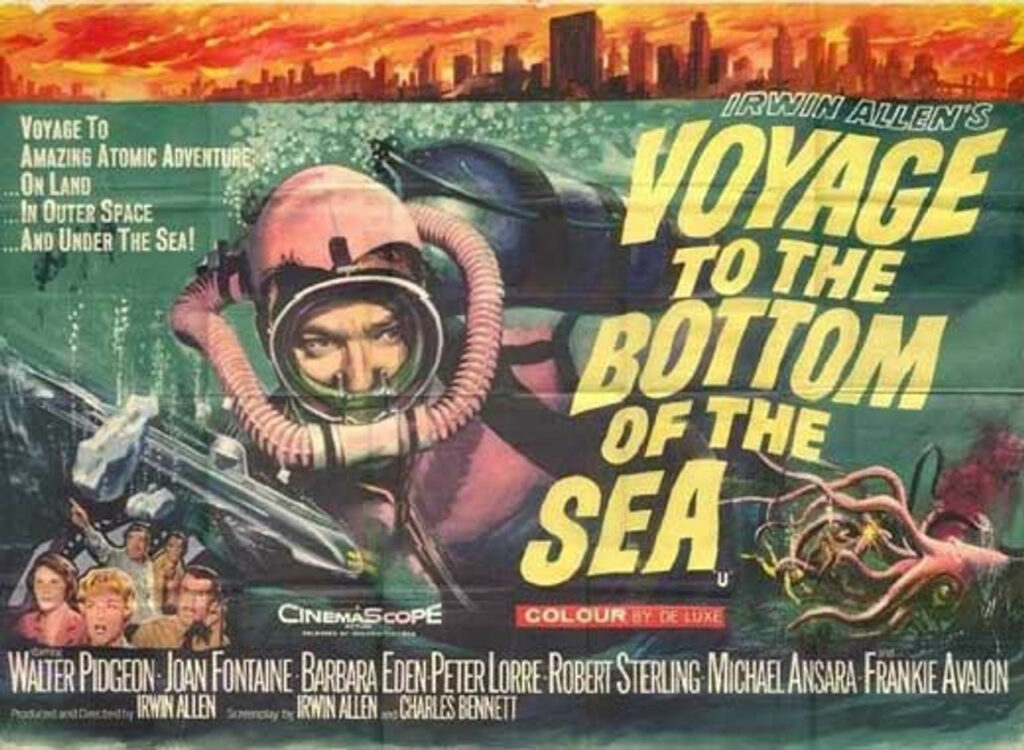
Employing an all-star cast, producer, director, and co-scriptwriter Irwin Allen produced the first non-WWII submarine adventure of the era. The 1961 film, Voyage to the Bottom of the Sea, was a clever Sci-Fi yarn about the prototype submarine Seaview. In the tale, the submarine’s designer and commander, Admiral Harriman Nelson (Walter Pidgeon) leads his crew against a giant squid, underwater mine fields, collapsing icebergs, a shipboard fire, saboteurs, and the United Nations.
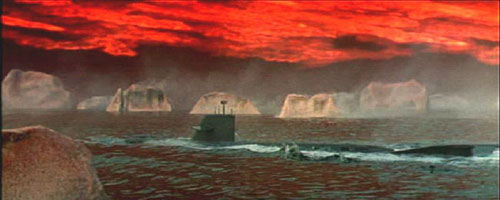
The film wastes no time getting to the action. The Seaview emerges from tests under the Arctic ice-pack in the year 1973 to find the sky burning, a passing comet having set the Van Allen radiation belt ablaze. The Seaview’s designer contrives a plan to save the world by firing atomic missiles onto a specific point in the burning sky. Admiral Nelson rushes to the United Nations to coordinate action. He realizes that the Seaview can reverse the atmospheric disaster by firing its missiles from the Marianas Trench precisely sixteen days before the radiation heats the Earth up to fatal levels. The fictional UN, like its real-world counterpart, proves to be ineffective and unable to make a valid decision to save Earth. They believe the problem needs careful study, a course that will delay action and doom mankind.
Nelson decides to act on his own and strikes out in defiance of UN orders.
During his race to the firing point, he encounters and overcomes a wide variety of obstacles, not the least of which are a crew ready to mutiny because of his hard leadership. The dissention grows to intolerable levels and is driven by personal conflicts, the stress of the looming threat, and pursuit by a UN submarine ordered to sink the Seaview for its defiance of UN orders.
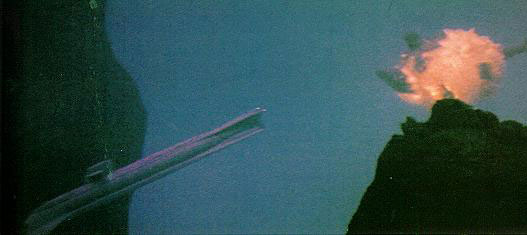
Admiral Nelson’s behavior seems increasingly erratic until his second in command, Captain Crane (Robert Sterling) plans to replace the admiral on ground of mental incompetence. This conflict climaxes as a religious fanatic, believing the burning atmosphere to be the just punishment of God, attempts to sabotage the entire mission. In the end, through thoroughly believable actions in a fantastic story, Nelson overcomes all, fires off the missiles, and saves the Earth.
It’s a very good sea adventure.
The screenplay was written by Allen and Charles Bennett based on an original story outline by Irwin Allen. Its depth is unusual for Sci-Fi adventures of the time. The characters are very real and believable and have real-life motivations behind their actions. Even the token congressman complains about the budget impacts of the Seaview’s construction. International politics plays a big part in this story.
The most unbalanced part of the film is the inclusion of Walter Pidgeon, whose performance simply blows away every other actor in the movie. By comparison, Robert Sterling seems flat.
The weakest part of the film is the totally unbelievable but mandatory love story between Robert Sterling and Barbara Eden. The two have absolutely no chemistry on screen.
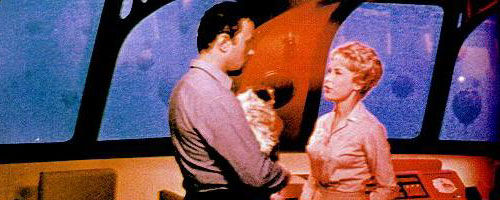
The technical support behind the movie is very good. John Lamb’s underwater photography brings the right feel to the story and the now-famous Seaview gives a good run to the Nautilus of 20,000 Leagues Under the Sea fame.
The model work in the film is quite good given the models used in other films at the time. The Seaview itself cost $400,000 to produce. These are especially highlighted during the minefield sequence, when a minisub is launched from the Seaview to separate the submarine from an attached mine. The whirling inferno in the sky is an impressive site, even 40+ years later.
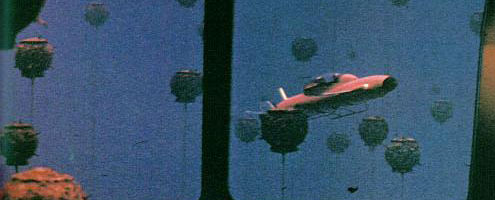
The film was a success and Irwin Allen managed to convince the studios to take a chance on a continued series. In 1964, Voyage to the Bottom of Sea hit the airwaves. The series held the premise of the submarine being captained by Lee Crane (David Heddison) but Admiral Nelson (Richard Basehart) remained on board and (consequently) served as the real acting commander. The first year of the series went fairly well but Voyage to the Bottom of the Sea soon plummeting into the depths. By the third season, the crew of the Seaview were encountering grumpy Leprechauns, ghostly sea captains, weekly alien invasions, lost time travelers, and a whole assortment of rubber monsters borrowed from Irwin Allen’s other series, Lost in Space. Yet, even with these problems, the series was the era’s longest-running science fiction show on network television.
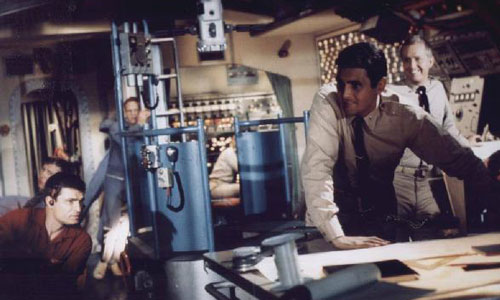
Beyond doubt, the stars of the show were the Seaview itself and the “flying sub”, its minisub/aircraft that took the characters from one situation to another. The flying sub was so popular that it was reused in the 1971 Irwin Allen movie, “City Beneath the Sea”, an exploit that reused footage from the Voyage to the Bottom of the Sea television series.
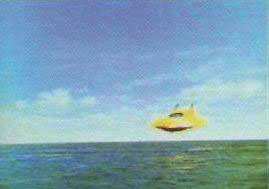
– written by the Two-Brained Cylon
NOTE: The images on this page are courtesy of Mike’s Voyage to the Bottom of the Sea Zone (www.vttbots.com), a comprehensive fan site enthusiastically endorsed by the Tombs of Kobol for its devotion to the preservation of this sci-fi classic.